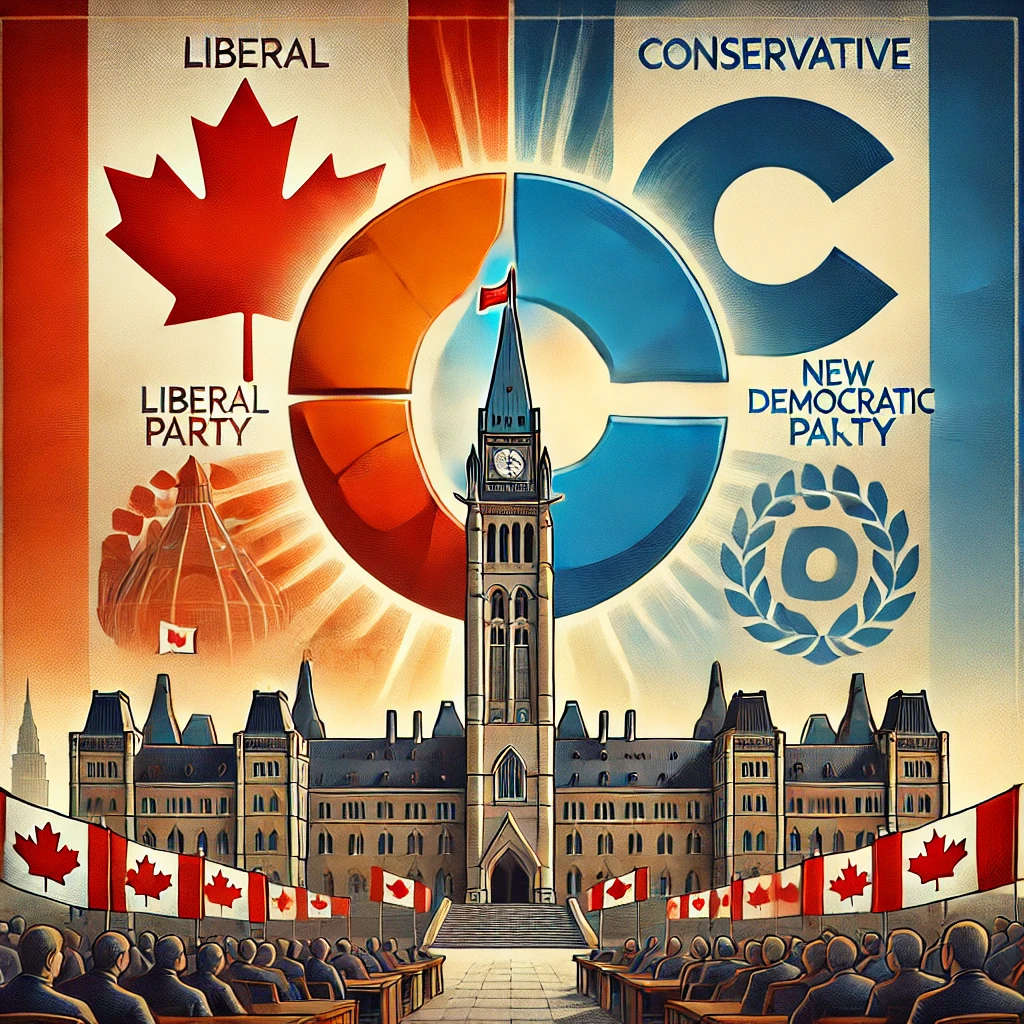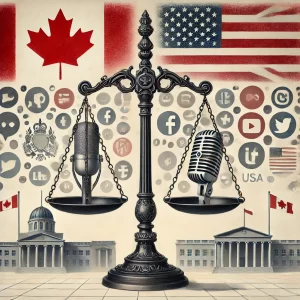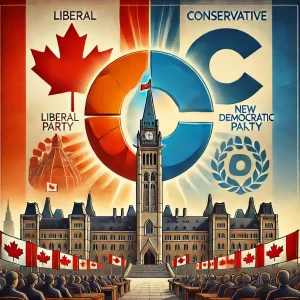
Canadian politics has undergone significant shifts in recent years, with the main political parties—the Liberals, Conservatives, and New Democratic Party (NDP)—all playing crucial roles in shaping the country’s future. As Canadians prepare for the next phase of political life, many are questioning how the policies of these parties, along with their leaders’ actions, will impact daily life. This article aims to provide a balanced and centrist look at the current state of affairs, focusing on the Liberals under Prime Minister Justin Trudeau, the NDP under Jagmeet Singh, and the Conservatives, currently led by Pierre Poilievre.
1. The Liberals and Justin Trudeau
Justin Trudeau, who has been Prime Minister since 2015, now leads a minority government after the 2021 federal election. The Liberals’ tenure has been marked by a combination of bold progressive policies and mounting challenges, both domestically and internationally.
One of the most defining issues of Trudeau’s recent term has been the cost of living crisis, which includes rising inflation and housing affordability. While the Trudeau government has introduced programs like the Canada Child Benefit and increased funding for affordable housing, many Canadians are still feeling the pinch of escalating costs. The Liberals have also continued pushing environmental initiatives, such as carbon pricing, aiming to meet Canada’s ambitious climate goals. However, critics argue that these policies are adding to the cost of living and driving up energy prices for ordinary Canadians.
Trudeau’s handling of foreign policy has also come under scrutiny. Tensions with China, including the fallout from the Huawei executive arrest and retaliation by China, have strained diplomatic relations. The Liberals’ approach to immigration—including increased refugee intake and a growing immigration target—has also sparked mixed reactions. Some applaud it as necessary for economic growth, while others worry about the strain on housing and public services.
How Canadians Are Affected: Under the Trudeau government, Canadians benefit from progressive social policies like expanded child care, but they are also facing rising living costs, prompting growing concerns about economic stability.
2. The Conservatives and Pierre Poilievre
The Conservatives, now led by Pierre Poilievre, are positioning themselves as the party of economic pragmatism and fiscal conservatism. Poilievre has been vocal in his opposition to Trudeau’s handling of the economy, particularly on issues like inflation, housing, and energy policies. He argues that excessive government spending and the carbon tax are to blame for the cost of living crisis.
Poilievre’s message resonates with many Canadians who feel financially squeezed, and he has gained traction by focusing on affordability, tax reduction, and job creation. One of his key proposals is to repeal the carbon tax to lower energy costs, a move that appeals to many voters but is controversial among environmental advocates.
In addition to economic issues, Poilievre has taken strong stances on crime and law enforcement, pushing for tougher laws to deal with rising crime rates, particularly in urban areas. His emphasis on freedom of speech and opposition to perceived government overreach during the COVID-19 pandemic has earned him support among more libertarian-leaning Canadians.
How Canadians Are Affected: Poilievre’s potential to roll back certain Liberal policies may lead to reduced taxes, but his approach could raise concerns about the future of climate action and social spending. His policies are likely to resonate with those focused on economic concerns, though environmentalists and social progressives might worry about a shift away from green initiatives.
3. The NDP and Jagmeet Singh
Jagmeet Singh’s NDP continues to play a critical role in Canadian politics, especially in its partnership with the Liberals under the confidence-and-supply agreement. This agreement, which sees the NDP supporting the Liberals on key votes, has given the NDP significant influence over government policy without being part of the cabinet.
The NDP has focused heavily on health care, affordable housing, and workers’ rights. Singh has been a champion of expanding public services, including pushing for pharmacare and dental care programs. These policies are popular with many Canadians, particularly those concerned with rising health care costs, but critics argue that they could lead to higher taxes and deficits.
Singh has also been a vocal advocate for tackling inequality, calling for increased taxes on the wealthy and large corporations. His message of economic justice appeals to progressives, though it has faced opposition from those who believe it could stifle economic growth and innovation.
How Canadians Are Affected: The NDP’s policies, especially around health care and housing, could benefit lower-income Canadians and those struggling with affordability. However, the funding of these initiatives could lead to debates over taxation and public spending, with potential implications for the broader economy.
The Big Issues Affecting Canadians
The current political landscape in Canada is shaped by a few key issues that will influence how Canadians vote and what their priorities will be in the coming years:
-
Affordability: Across the political spectrum, the rising cost of living is front and center. Whether it’s Trudeau’s social programs, Poilievre’s tax-cutting policies, or Singh’s push for expanded public services, Canadians are seeking solutions to the economic pressures they face daily.
-
Climate Change: While the Liberals remain committed to carbon pricing and green initiatives, the Conservatives want to reduce what they see as unnecessary financial burdens on families. The NDP, for its part, supports aggressive climate action but prioritizes policies that ensure the transition is fair for workers and low-income Canadians.
-
Health Care: With Canada’s health care system facing strain, both the Liberals and NDP are pushing for reforms like dental care and pharmacare. The Conservatives, however, are likely to focus on reforms that improve efficiency and reduce wait times rather than expanding the system.
Conclusion
As Canadians look to the future, the direction of the country hinges on a delicate balance of economic, social, and environmental priorities. The Liberals, Conservatives, and NDP each offer different visions for Canada’s path forward, with policies that will have real impacts on everyday lives. Whether it’s the cost of living, access to health care, or climate action, Canadians will have to weigh the trade-offs and decide which path best aligns with their values and needs.
At this crossroads, it’s clear that no single party has all the answers, and the diversity of perspectives reflects the complex challenges Canada faces today. What’s certain is that Canadian politics will continue to evolve as the country seeks solutions that work for everyone.






